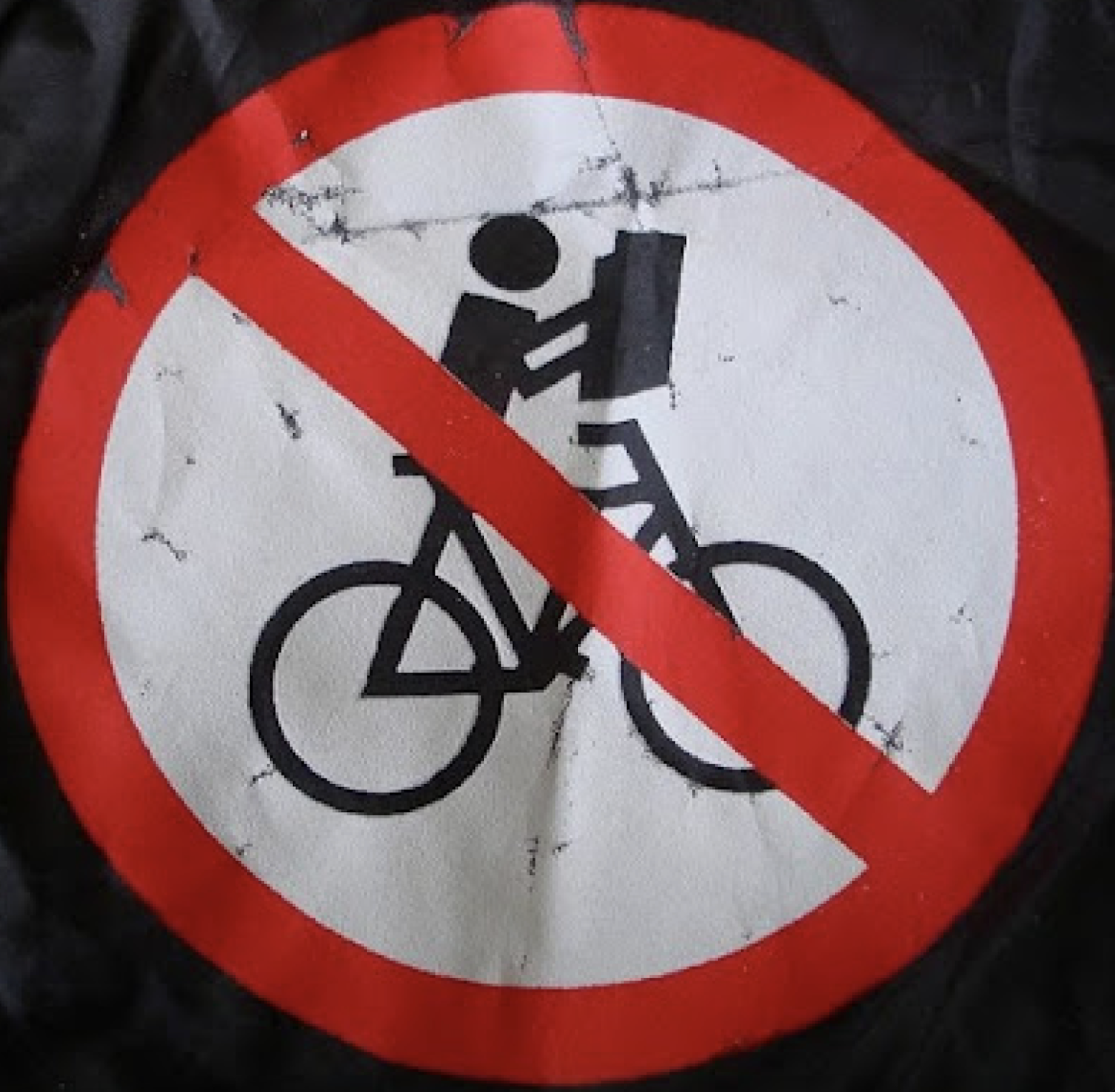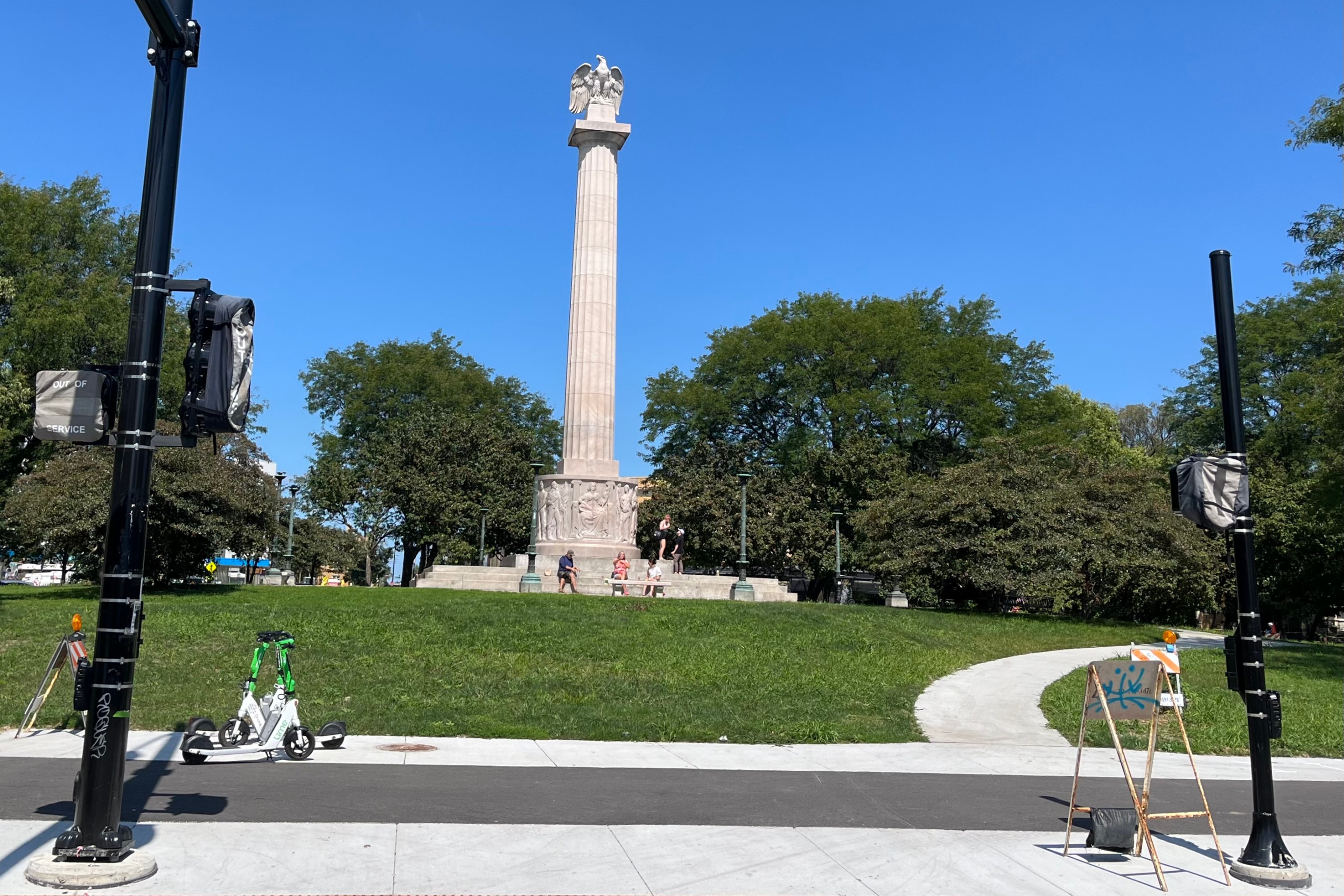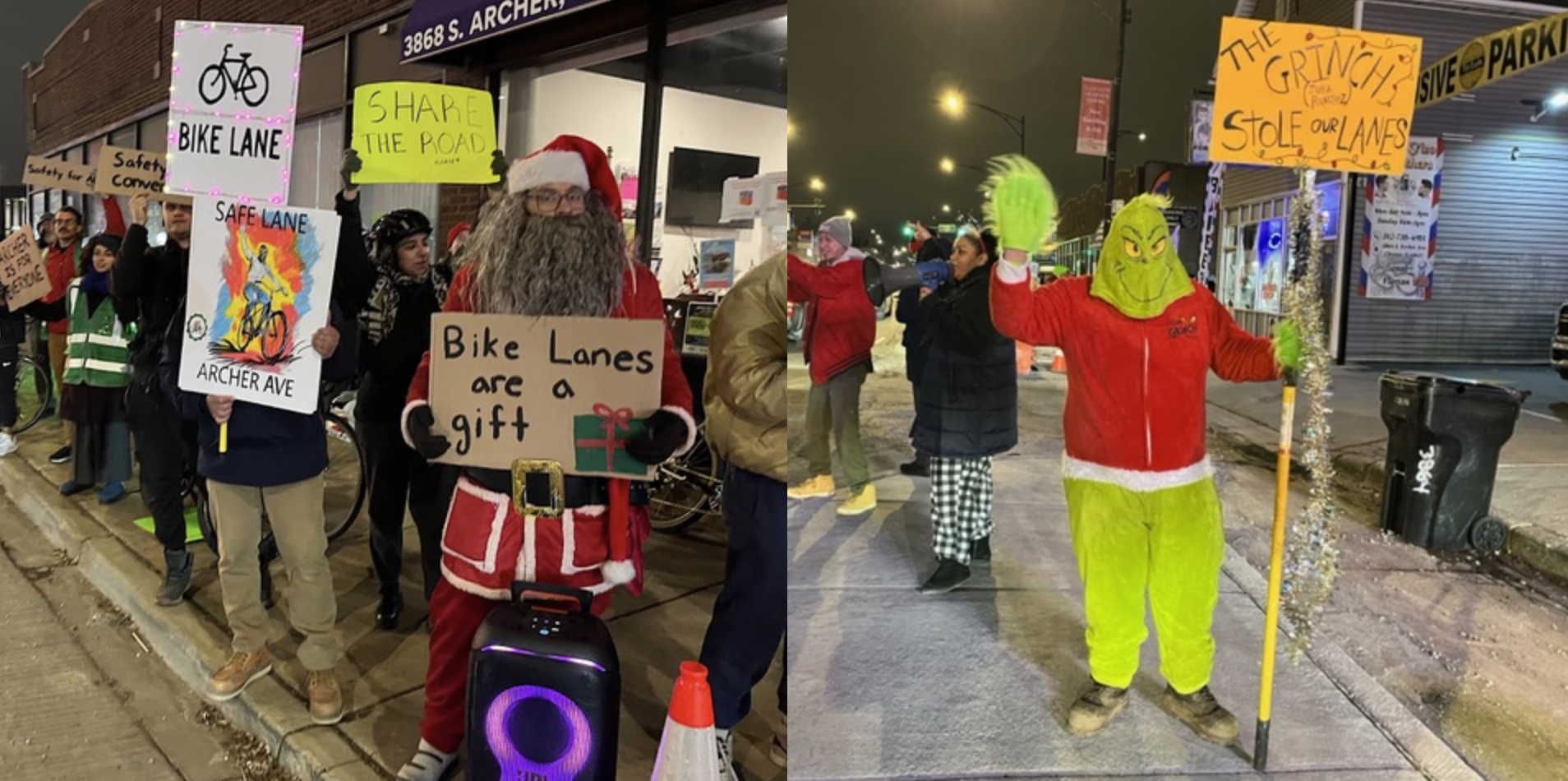Shaun Jacobsen is an Uptown resident working in market research for a French company. He graduated recently from University of Wisconsin-Milwaukee with majors in French and sociology, and a minor in urban planning. He writes in a personal blog, Transitized, about international perspectives on local transportation issues. This article was originally published on Transitized on December 16, 2012.
In December, I was walking down North Avenue (near Clybourn Avenue and Halsted Street) in Lincoln Park. Something I’ve noticed before, not only when walking but also on the rare occasion where I’ve driven, is that North Avenue is a very narrow, fast street with narrow sidewalks:
There are at least 50 stores/restaurants along/just off of North Avenue. Many of the storefronts are recessed back from the sidewalk (either to create a small plaza or because there is a parking lot). Kudos to the few stores that decided to recess their stores to create a plaza/wider walkway, as the sidewalks are very narrow and the existing street furniture (where it actually exists) doesn’t do much to make pedestrians feel safe from fast-moving traffic on North Avenue.
The traffic situation is a mess. Not even because there’s too much of it or a high average daily traffic count, but because there are too many opportunities for cars to exit/enter parking lots/garages along the street. The intersection of diagonal Clybourn Avenue at North Avenue (pictured above) makes crossing Clybourn on the southern end of North difficult.
Riding a bike on North would be difficult and I would probably not attempt it. But North is a perfect street to get from neighborhoods west of the Kennedy Expressway (Wicker Park, Humboldt Park, etc.) to this neighborhood and the Lakefront [trail]. The only other direct way to get there is the #72 CTA bus, which often gets stuck in the traffic, or Division Street (1/2 mile south), which is also full of fast-moving traffic.
How could we make North Avenue more friendly to pedestrians, people on bikes, and those arriving by public transportation?
North Avenue is not proposed to be any sort of bicycle-friendly street in the recently-released Chicago Streets for Cycling 2020 plan. It is an arterial, high-speed street that cuts through at least three neighborhoods with lots of people. What I’m proposing is not part of any existing plan, it would certainly be difficult and costly to implement, but ideas start somewhere, and aren’t always perfect, nor cost-effective, nor publicly appealing the first time around. Take a look anyway:
I wanted to take some of the best ideas from other cities and even Chicago neighborhoods, and implement them here:
- Protected bike lanes: In my opinion, these are the single-best tool to get people to feel more comfortable biking in the city, and therefore are the best way to actually get people onto a bike. I don’t believe that buffered bike lanes are any better than the majority of bike lanes, which are just some extra paint. Give people protection and their own signals, and they’ll feel more comfortable and more safe. Even though the City of Chicago does not build protected bike lanes on narrow streets like North Avenue, I implemented this idea.
- Green wave for people on bikes: This is another way to get people more comfortable on a bike. Riding at an easy speed (around 12 mph) is safe and efficient, so timing the signals to get people on bikes going through more green lights at this speed gets them to their destination faster and without having to exert a lot of energy stopping and going at every light. This may not always be possible given the other goals (prioritizing signals for buses), however.
- Shared bus stop: I couldn’t think of a better way to incorporate bus stops in the design with the narrower streets. People on bikes should stop for buses that are unloading/picking up passengers. Right-turning cars should wait for buses and bikes (instructed by a sign) and right-turns on red would be prohibited.
- Prioritize the bus: To keep the buses moving and out of the bike lane, signal prioritization should be in place for CTA buses. Longer greens for approaching buses will keep all traffic flowing better.
- Reduce pedestrian crossing distances: The current intersection of North and Clybourn is large and dangerous. Pedestrians shouldn’t have to cross such wide distances with fast-moving cars whizzing by in all directions. Extending curbs where possible and implementing a direct crossing or pedestrian scramble at intersections like these will improve the pedestrian experience on heavy retail streets like North Avenue.
- Adding street furniture: North Avenue currently has little street furniture. Trees, potted plants, and benches help separate road traffic from pedestrian traffic. There is not currently room for more furniture without reducing either the sidewalk or road width. The road width is sacrificed for the good of non-automotive users: people on foot or on bike.
Many of Chicago’s streets were designed for cars to move quickly. As we see young people buying cars less, riding bikes, walking more, and our neighborhoods relying on the economic diversity of many people coming by way of many different transportation modes, it only makes sense to make our streets more equitable – even if that means reducing the capacity for cars. Having more roads only means more drivers will occupy them: reduce road capacity and you reduce unnecessary trips that can be completed using other transportation modes. Existing portions of east-west arterial streets like Lawrence Avenue and Fullerton Parkway have half the total lanes of North Avenue but still handle more than half the capacity. A reduction in lanes won’t necessarily mean an increase in traffic over the long run. Drivers will adapt.
This idea would work in many neighborhoods, including Lincoln Park nearer Diversey and Clark, which is already heavily developed but still underserved by public transportation and lacking in decent bicycle infrastructure. It’s time we created a more equitable network of streets in our densest neighborhoods, especially those where walkable retail and restaurant options have appeared without the walkable infrastructure to serve them.







